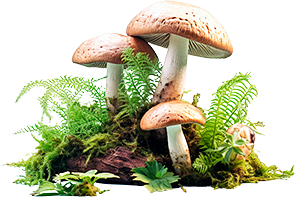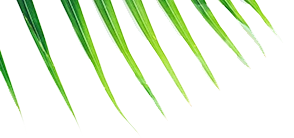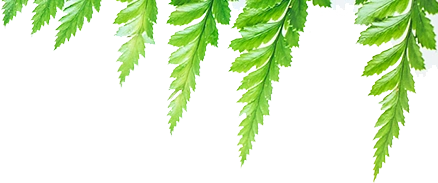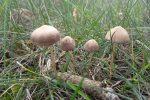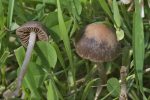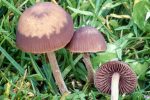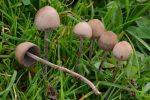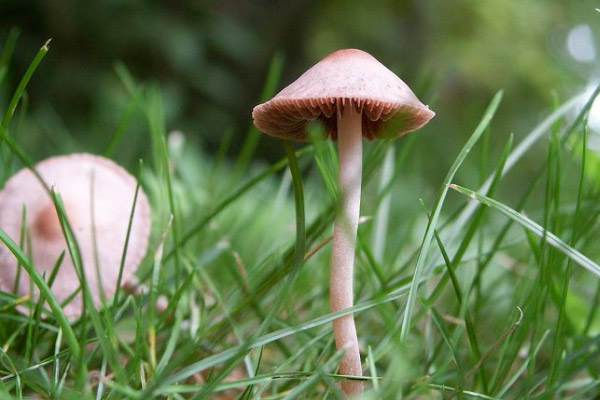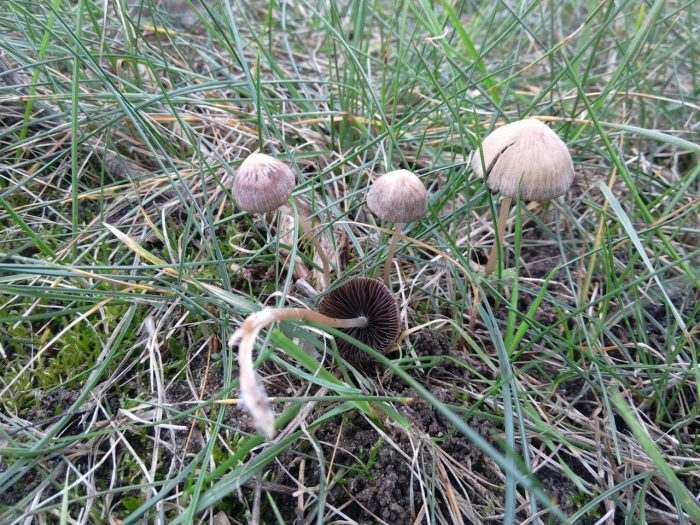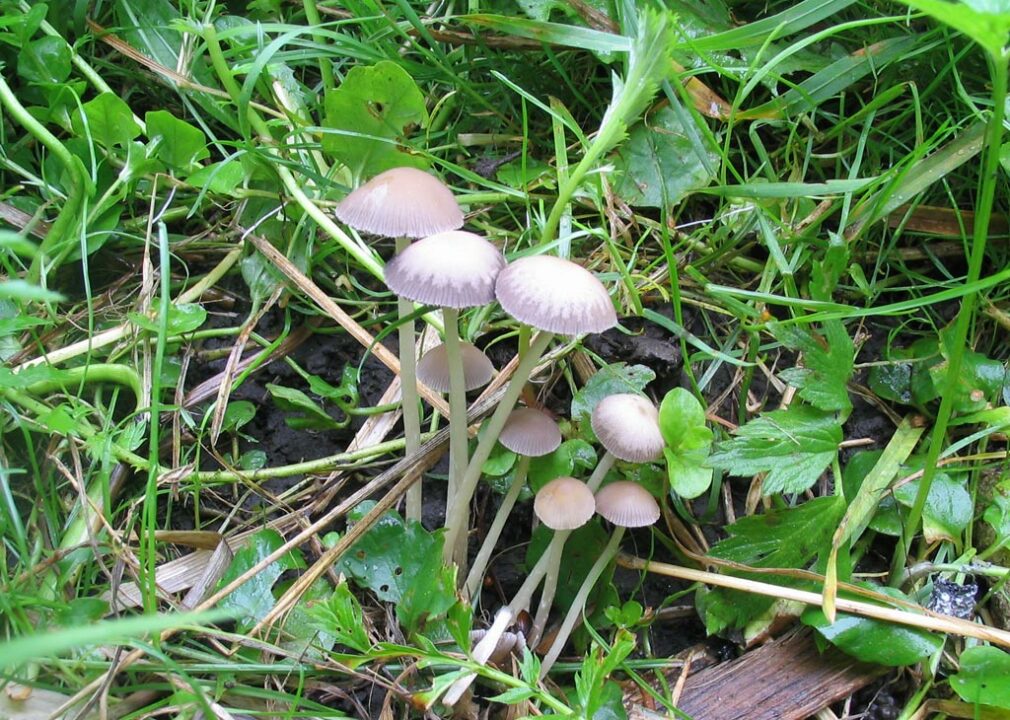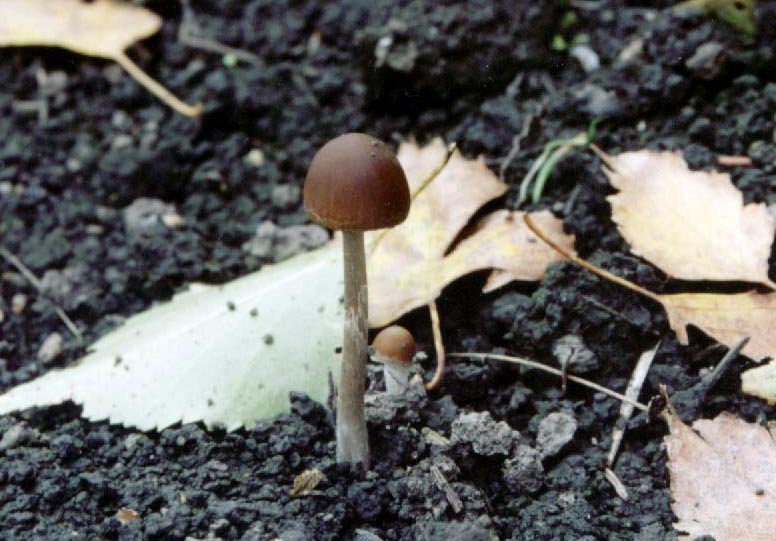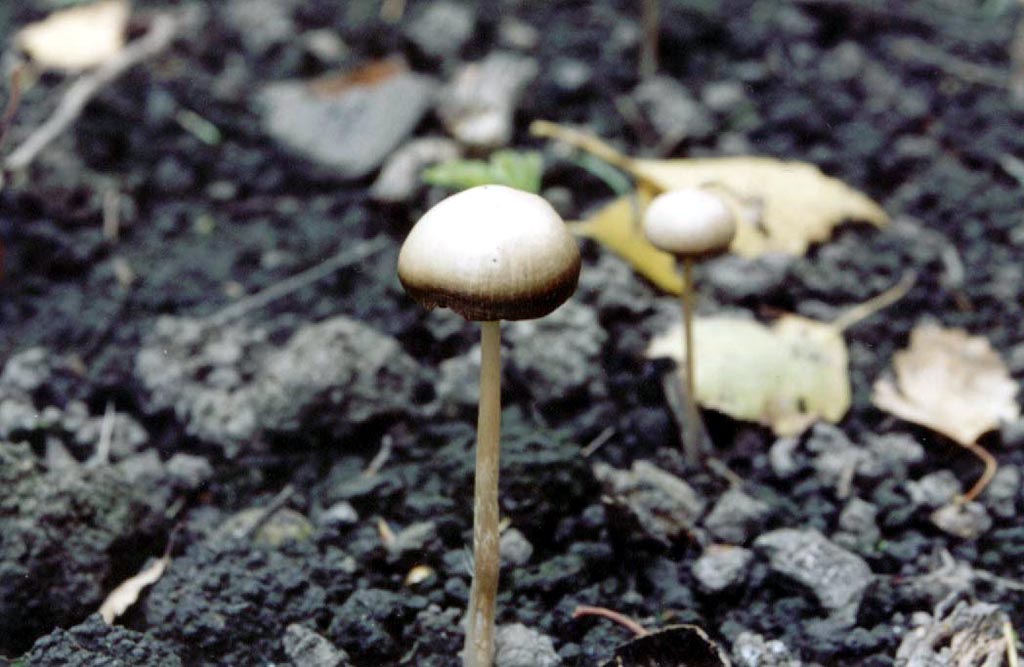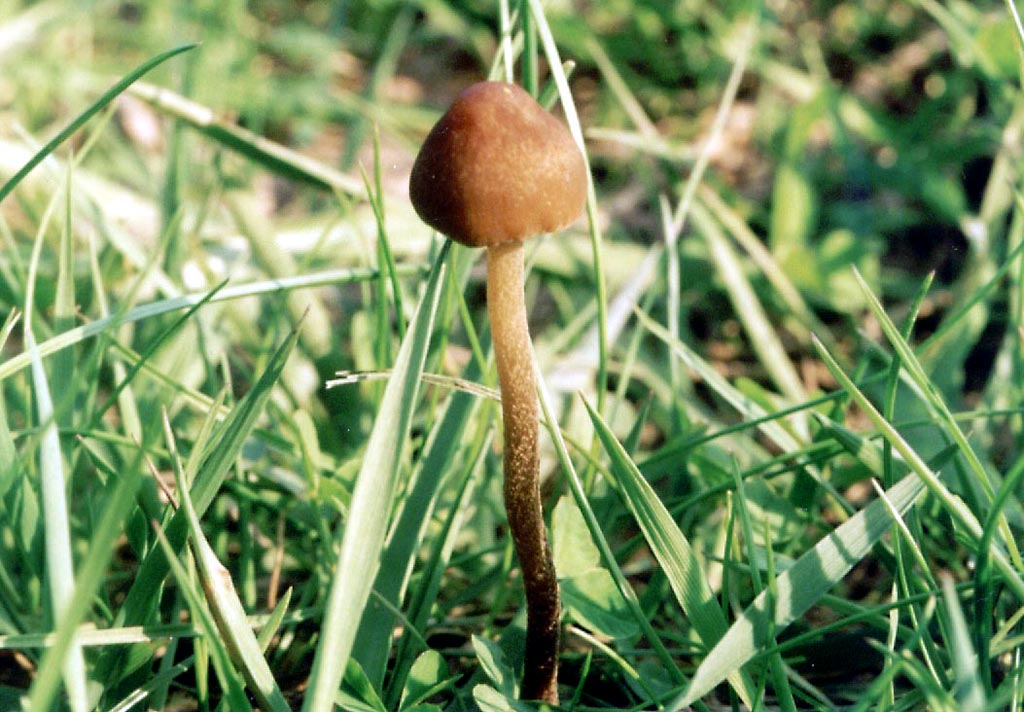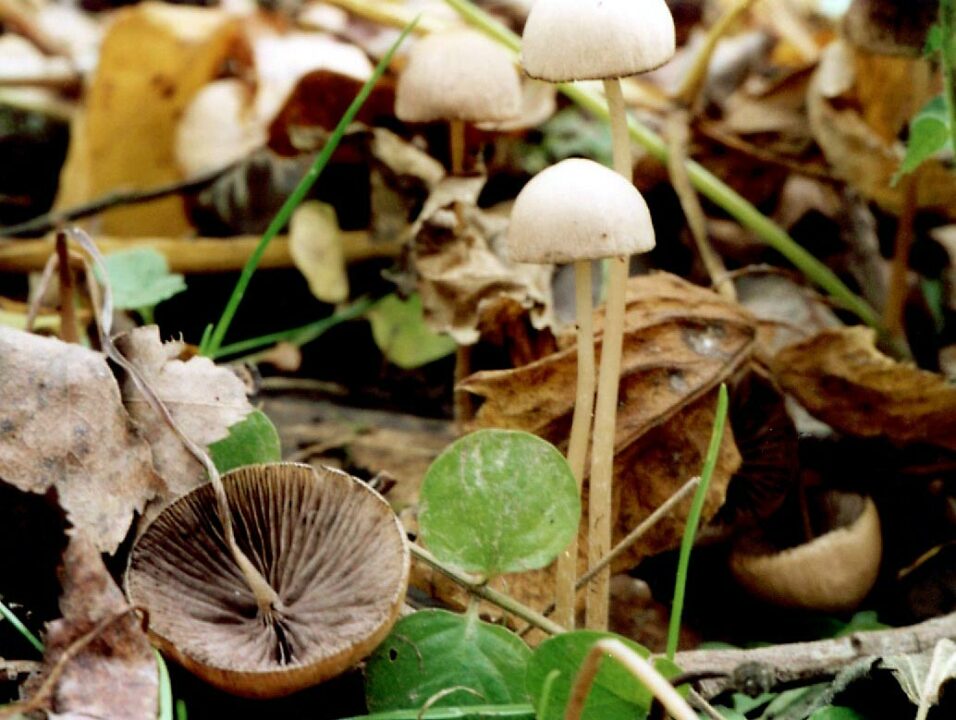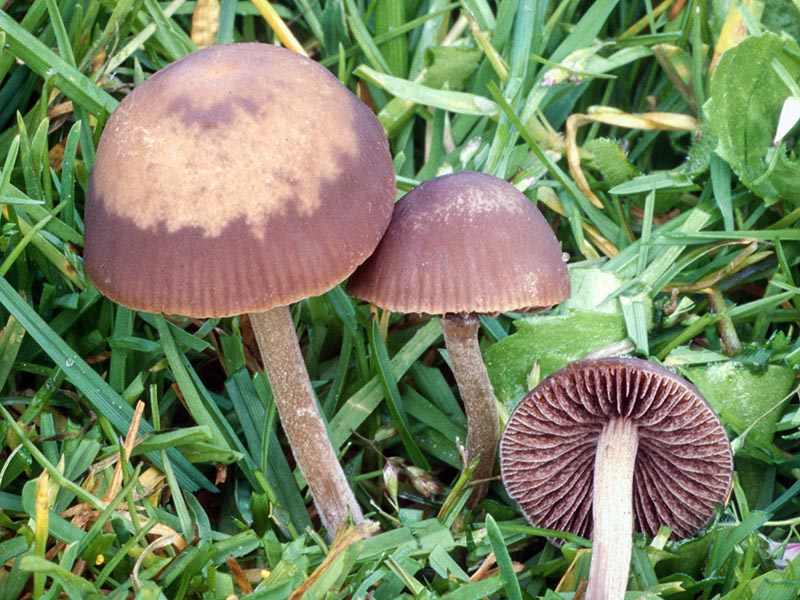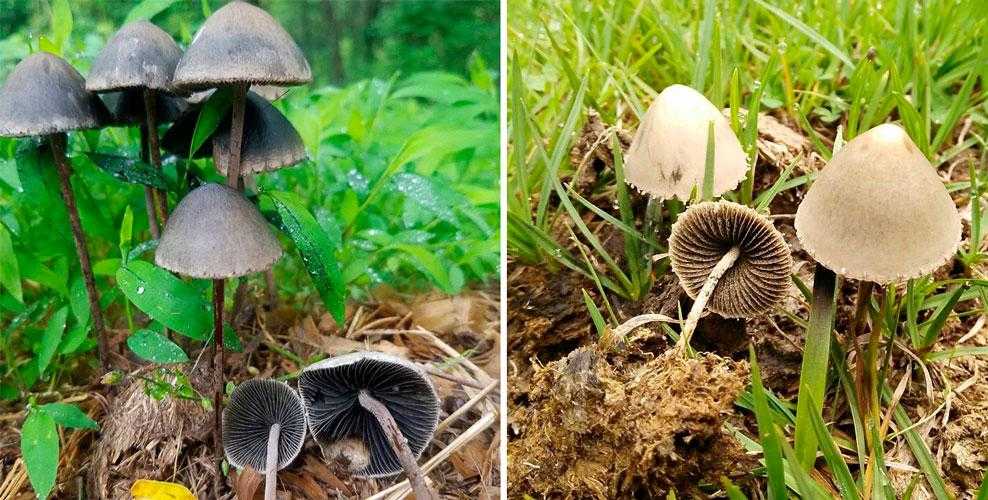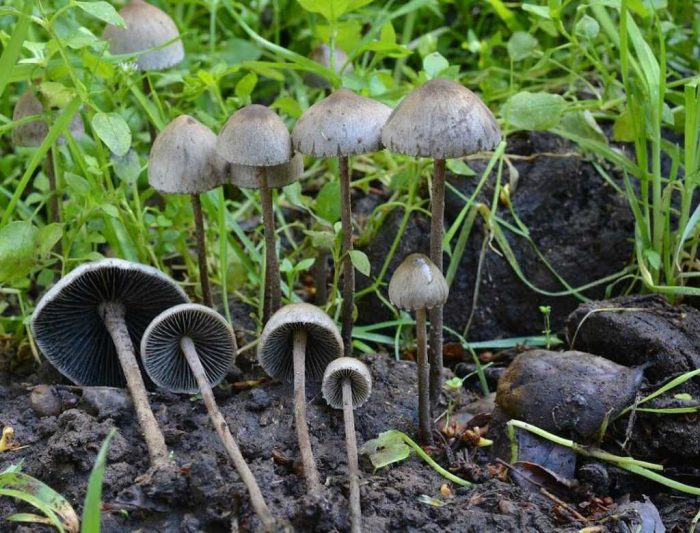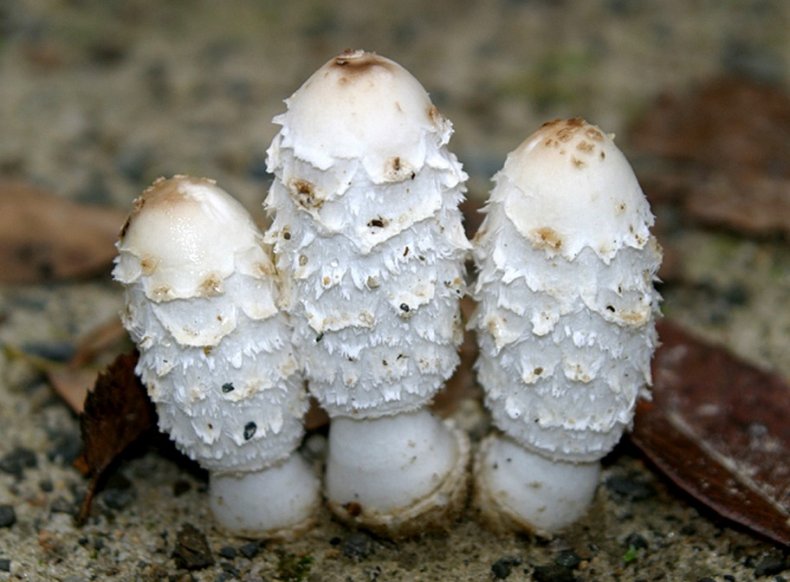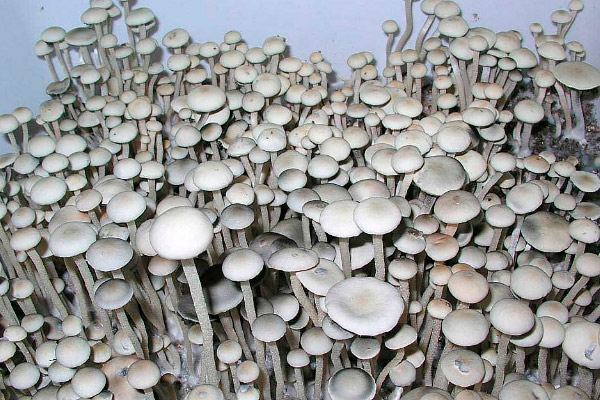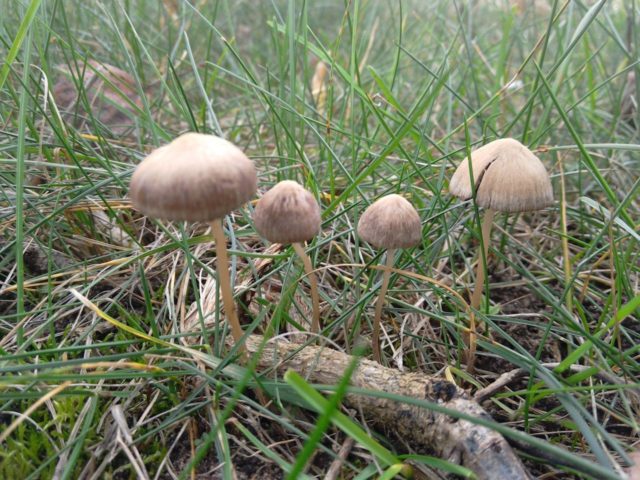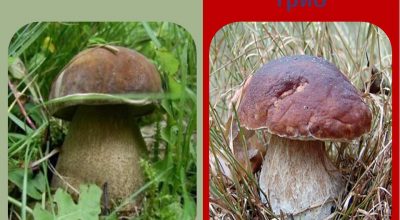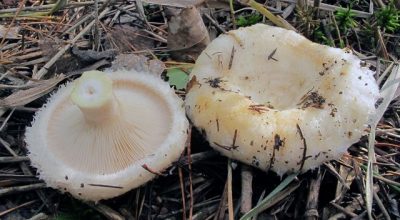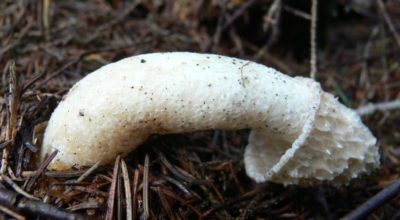These hallucinogenic mushrooms have many names, but their main scientific ones are completely unable to. Panaeolina Foenisecai does not grow on hay or manure and makes a pleasant smell. And where then this mushroom grows and whether it is edible?
Content
A little story
Dovznik hay, Panaeolus foenisecii
The current name (According to Index Fungorum): Panaeolina Foenisecii
Hat: 1–3 cm in diameter, Initially bell -shaped, later convex, Never completely opened. Color from dark brown to brownish yellow, usually with a lighter area in the middle. The pulp is thin, without smell and taste. Pay attention, what if mushrooms grow in two tiers, The lower hat is often darkened by spores, fallen from above.
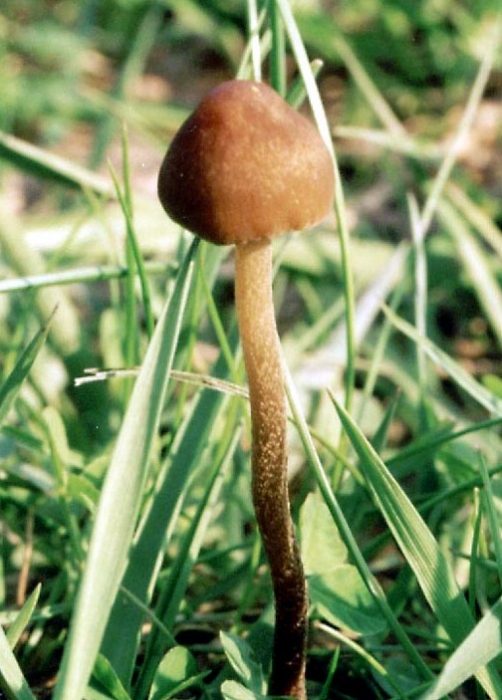
Gimenofor: light brown and frequent records, As they aged on them, black spots are formed from the ripened dispute.
Spore powder: black.
Leg: 4–6 cm high, 0,2-0,3 see thickness, smooth, hollow, fibrous, brownish.
It is found in the meadows, herbs, along the forest roads, on lawns and in gardens from mid -summer to autumn. It appears most often in the second half of September.
Similar species. Mushrooms of the genus Panaeolus are difficult to distinguish; Scientists still strongly doubt that, how many species exist and where to draw a border between them.
Edibility:
True or not, No one knows - this is also affected by the fact, that different representatives of the genus Panaeolus is not easy to distinguish. One thing can be said for sure: Some types of this kind definitely contain psilocybin in concentrations, noticeably different from zero. The only question is, Which ones.
It is not entirely clear, Who (And why) calls Panaeolus Foenisecai Sennaya dungar. This mushroom does not grow on manure, ni na hay; its records do not blur, like a typical dawn. As for the rest, then this Panaeolus is not very clear: He appears from nowhere, does not depend on the season or weather conditions, and then disappears without a trace.
Panaeolus foenisecii is not easy to find in late spring, In mid -May, But them, Certainly, You can meet, If you try thoroughly. These mushrooms, grown up in the month of May, differ in large size and healthy color.
The properties of the hay man
Регулярное употребление панеолуса может повлиять на психику, привести к изменениям личности и повредить внутренние органы: кишечник, желудок, почки и сердце, и может потребоваться помощи психотерапевта.
Location
Навозник сенный предпочитает не навоз диких и домашних животных и не сено, а богатую азотом луговую почву. Для роста он выбирает поля, meadows, River valleys, lawns and pastures, covered with thick grass. Этот гриб широко распространен по всей планете, но чаще встречается в европейских странах.
Гриб редко появляется в одиночку, чаще собирается в большие семьи и нередко срастается ножками. Он начинает плодоносить весной, но достигает пика в сентябре-октябре.
Similar species
Существует несколько похожих видов сенного навозника, но с существенными различиями.
Interesting facts
- Для лечения алкогольного отравления порошок сенного навозника следует давать пациенту во время запоя, иначе эффект от его применения будет нулевым. В результате провоцируется сильное отравление, что приводит к отвращению и постоянному отказу от алкоголя.
- При разложении гриб выделяет черную жижу или грязь, которая раньше использовалась в качестве чернил для письма. Ее невозможно подделать, поскольку споры остаются на бумаге и их можно четко различить.
